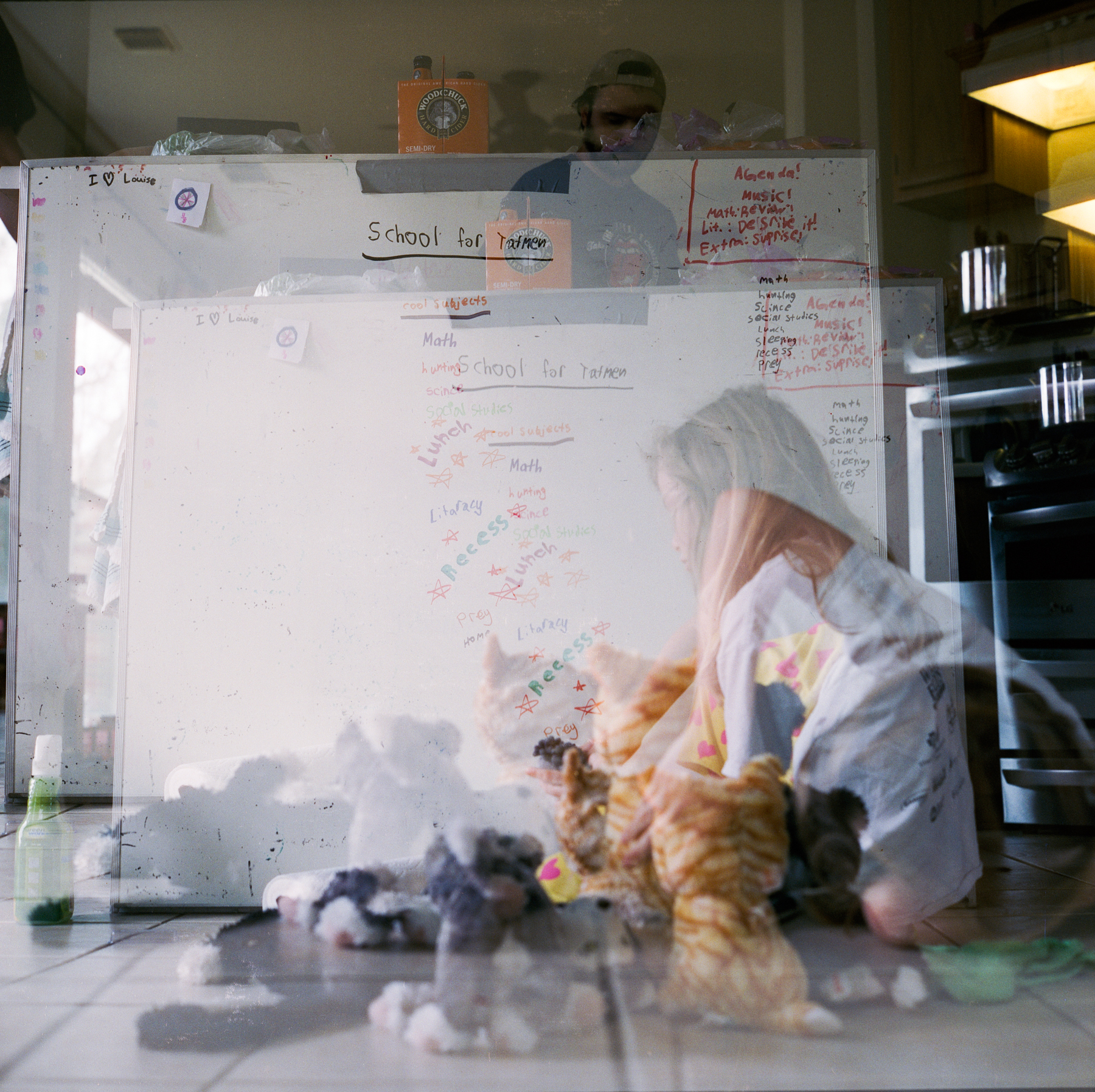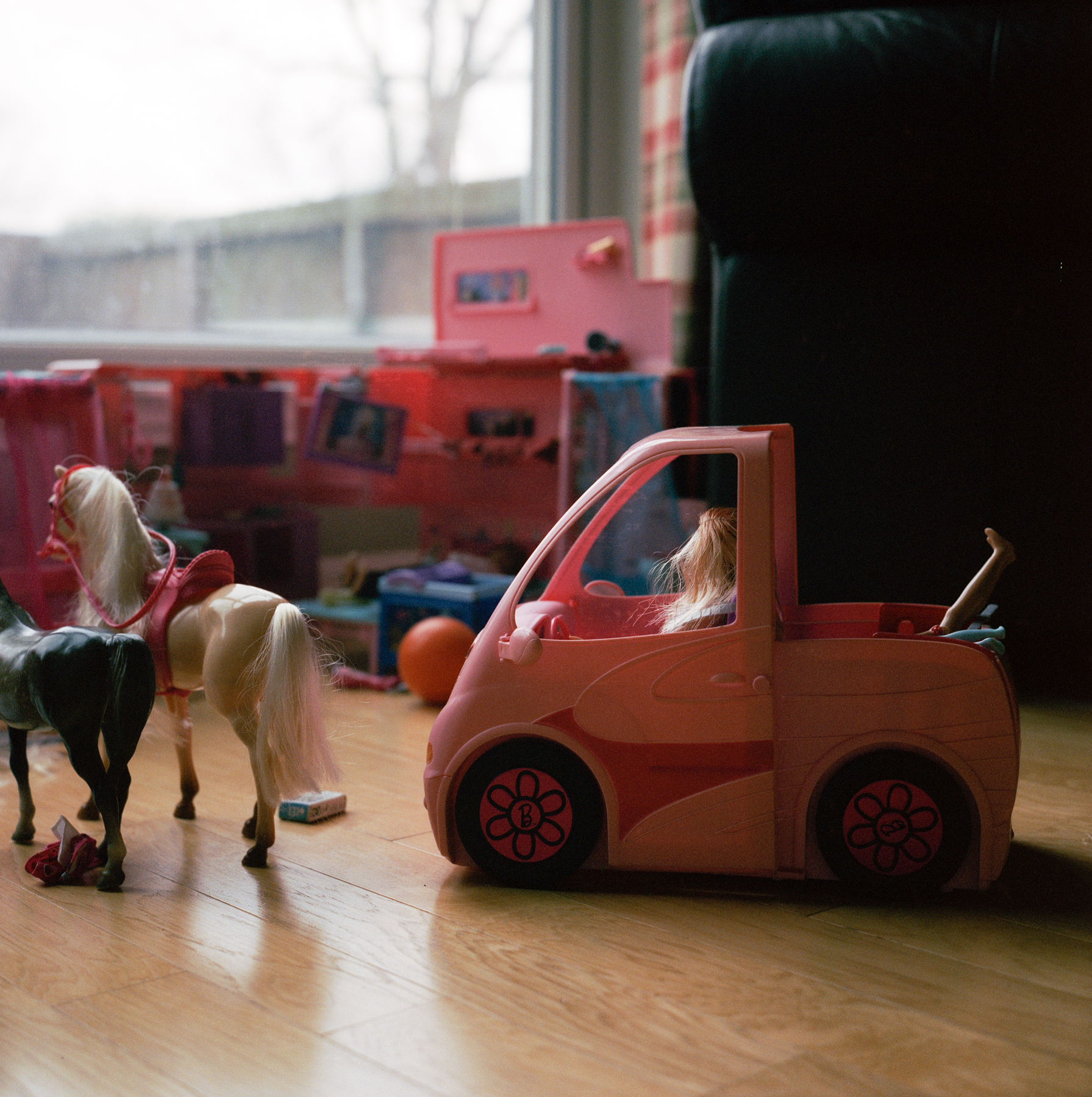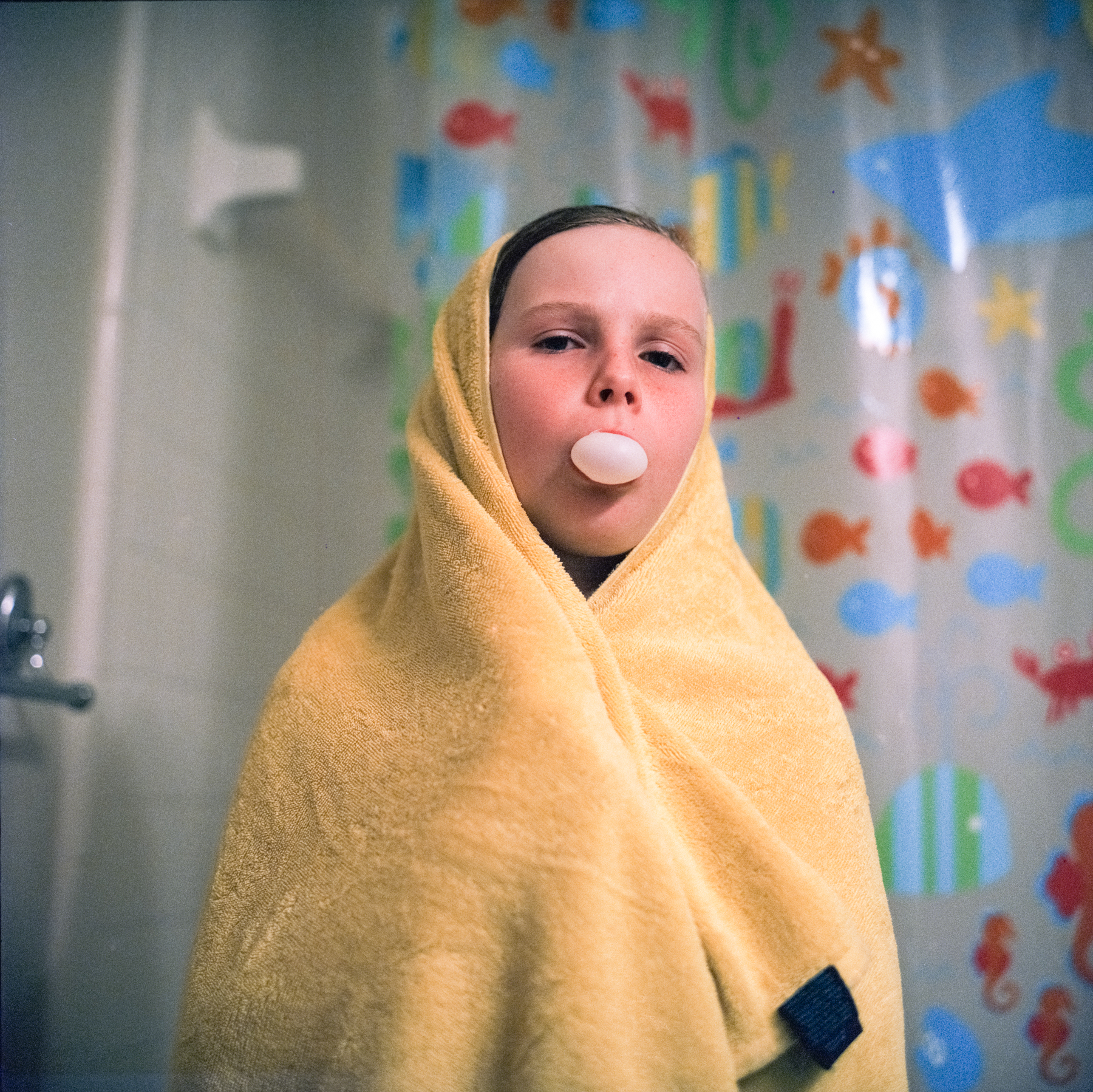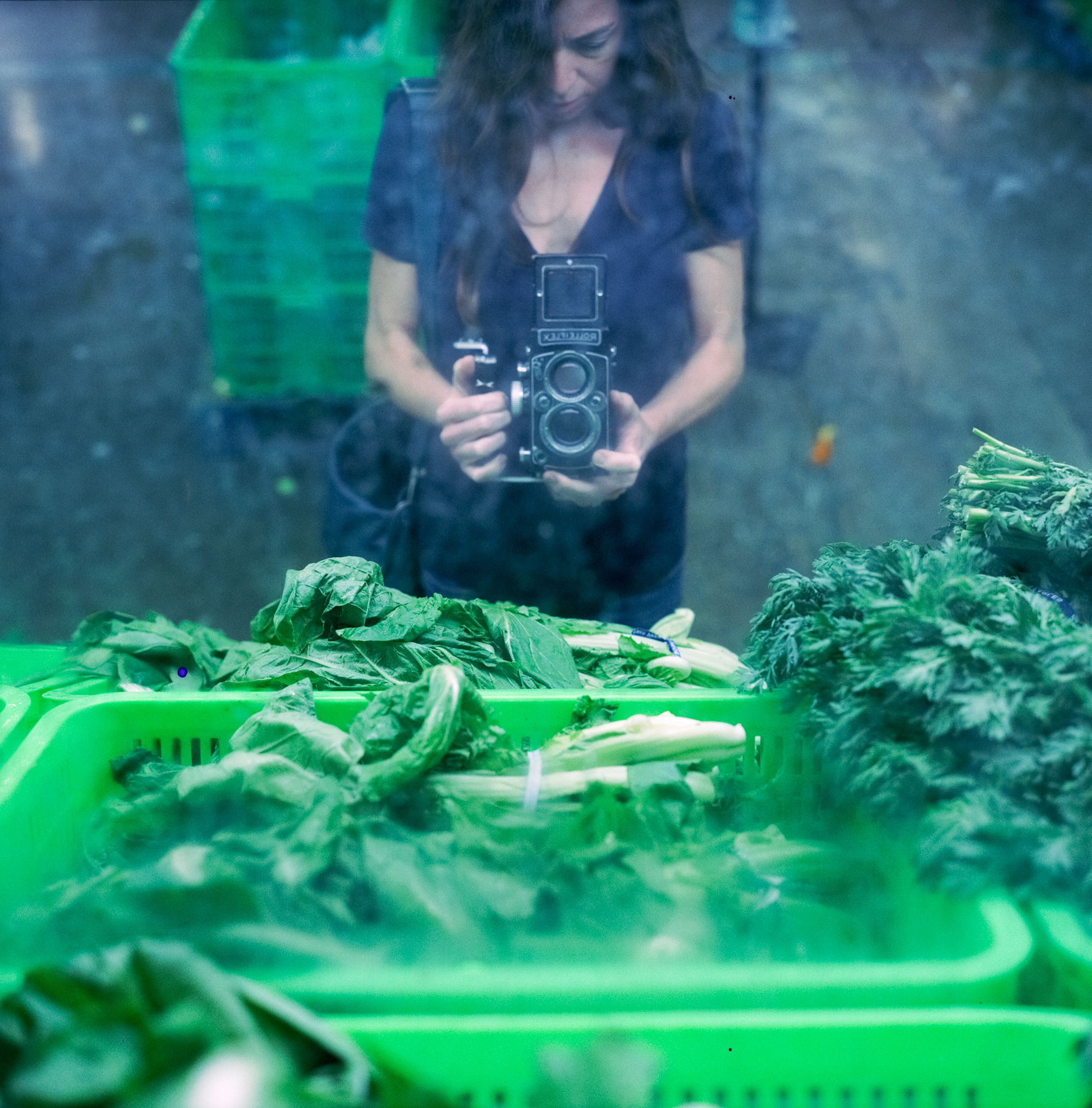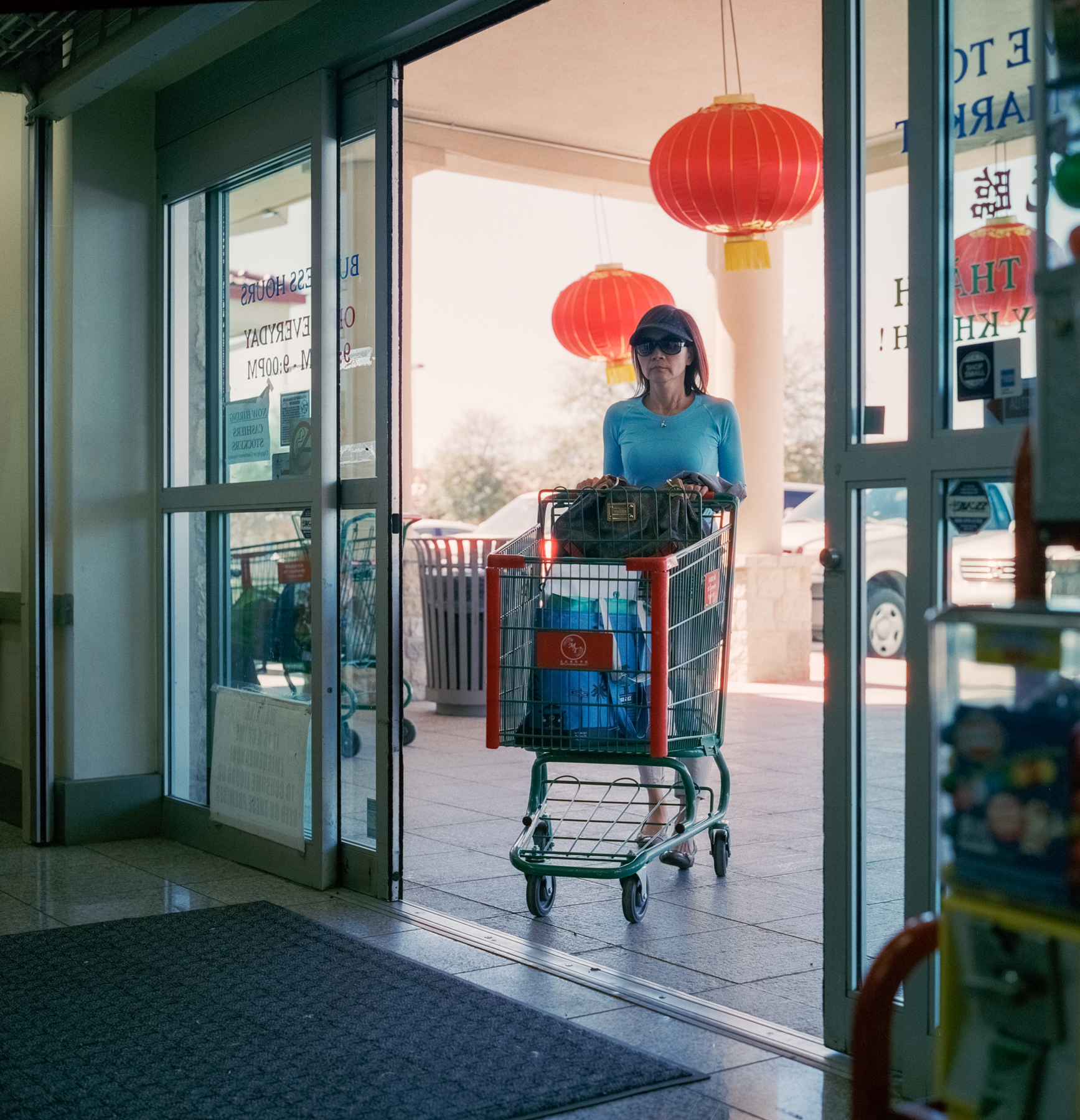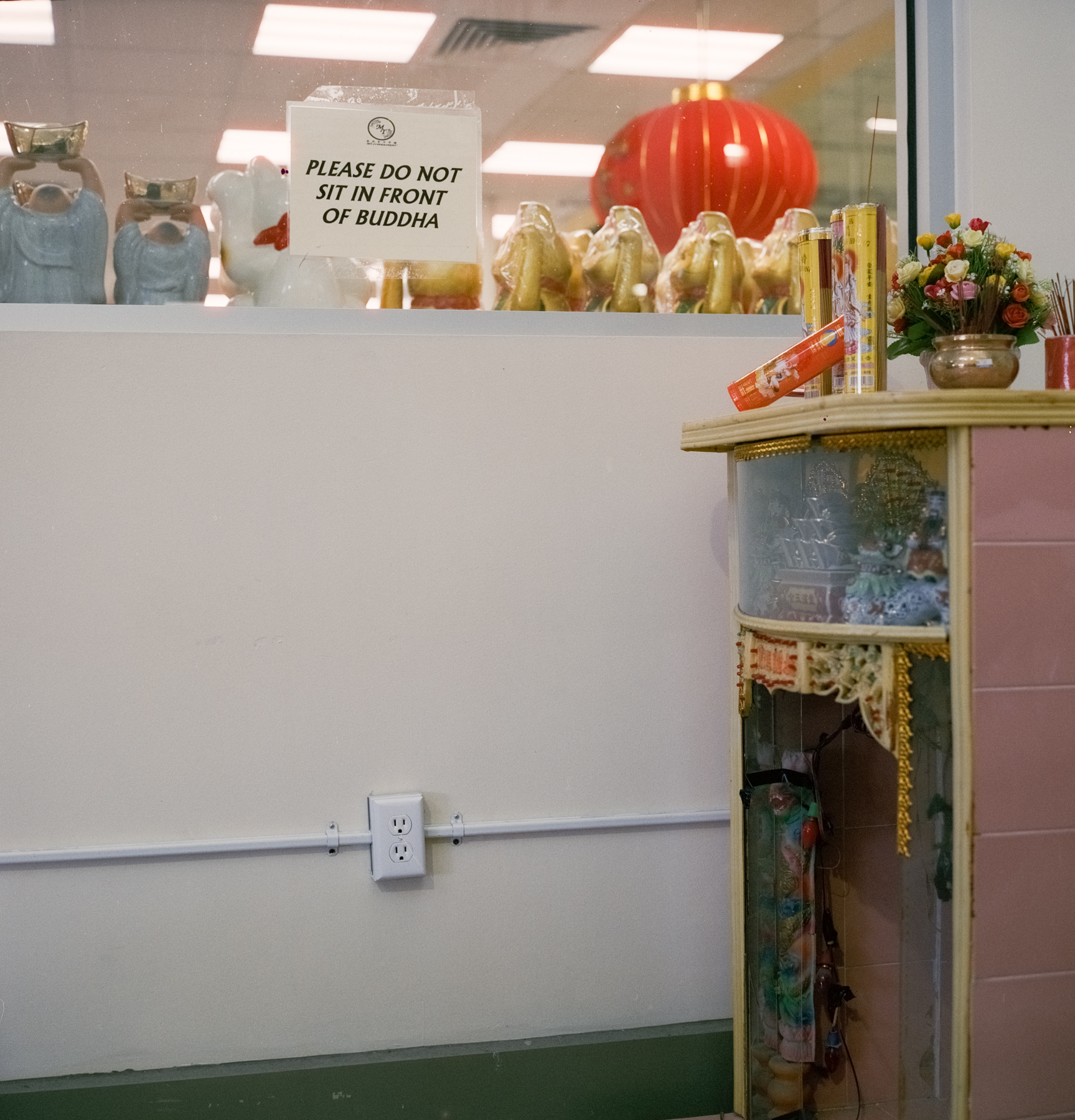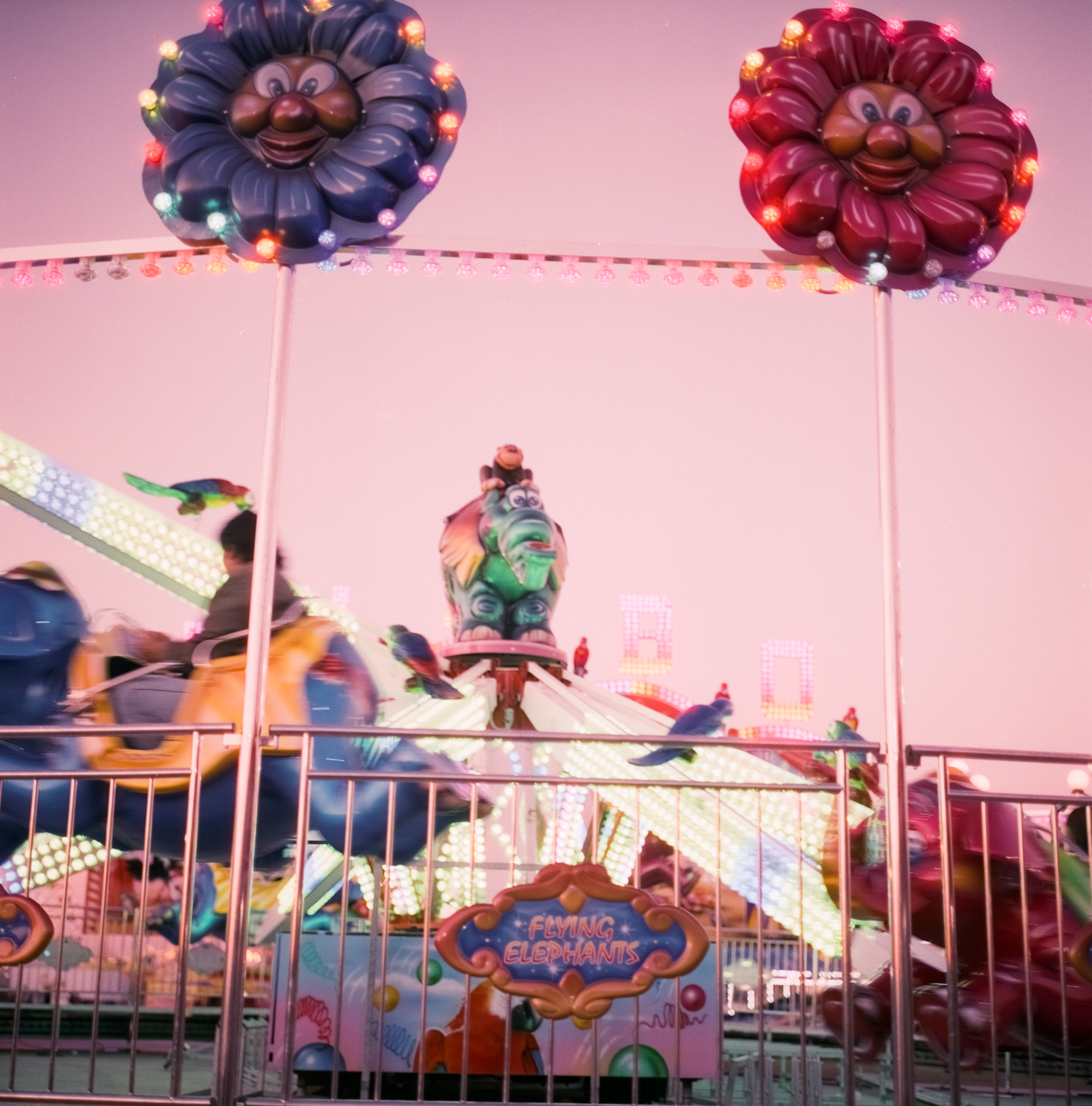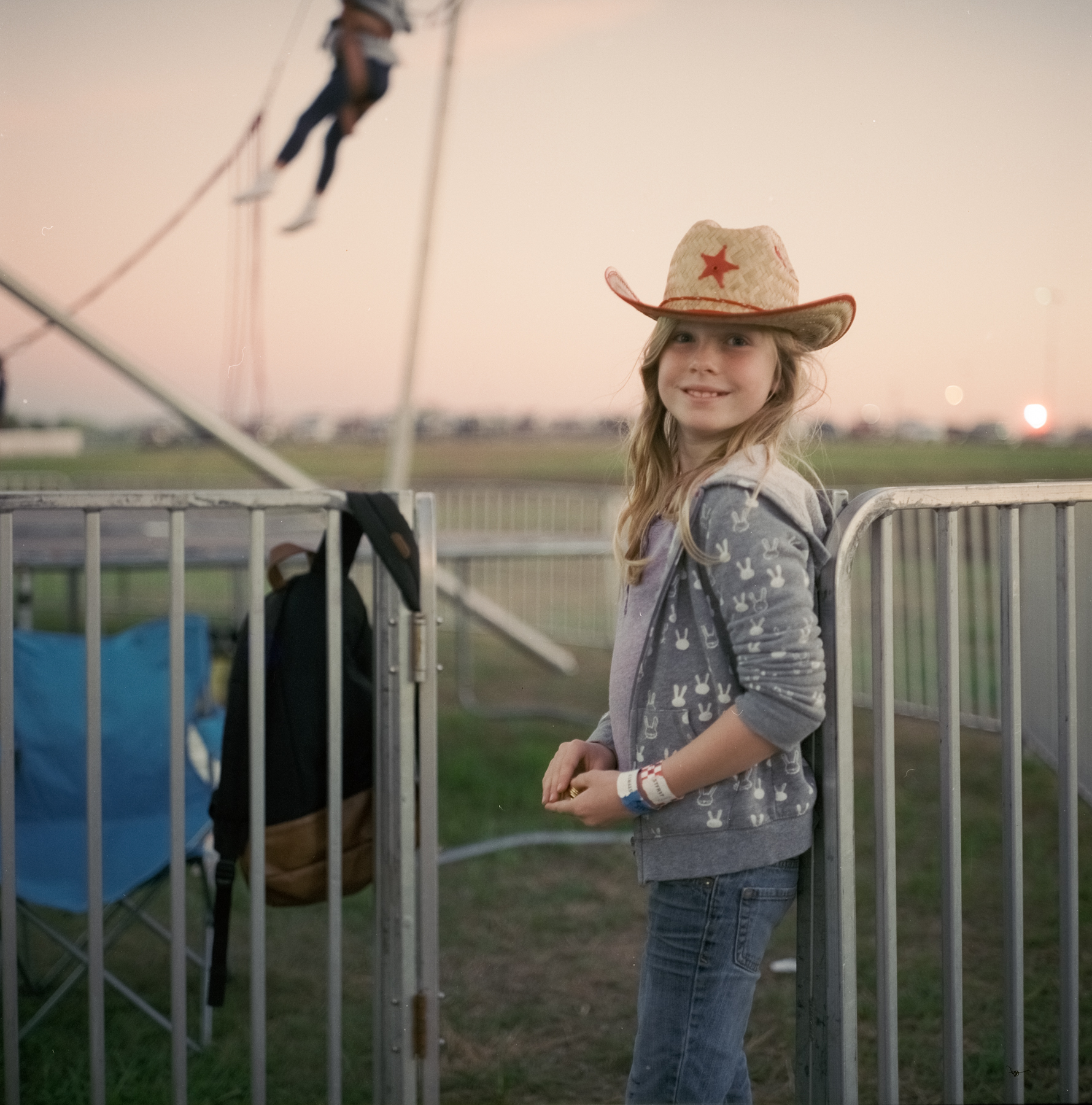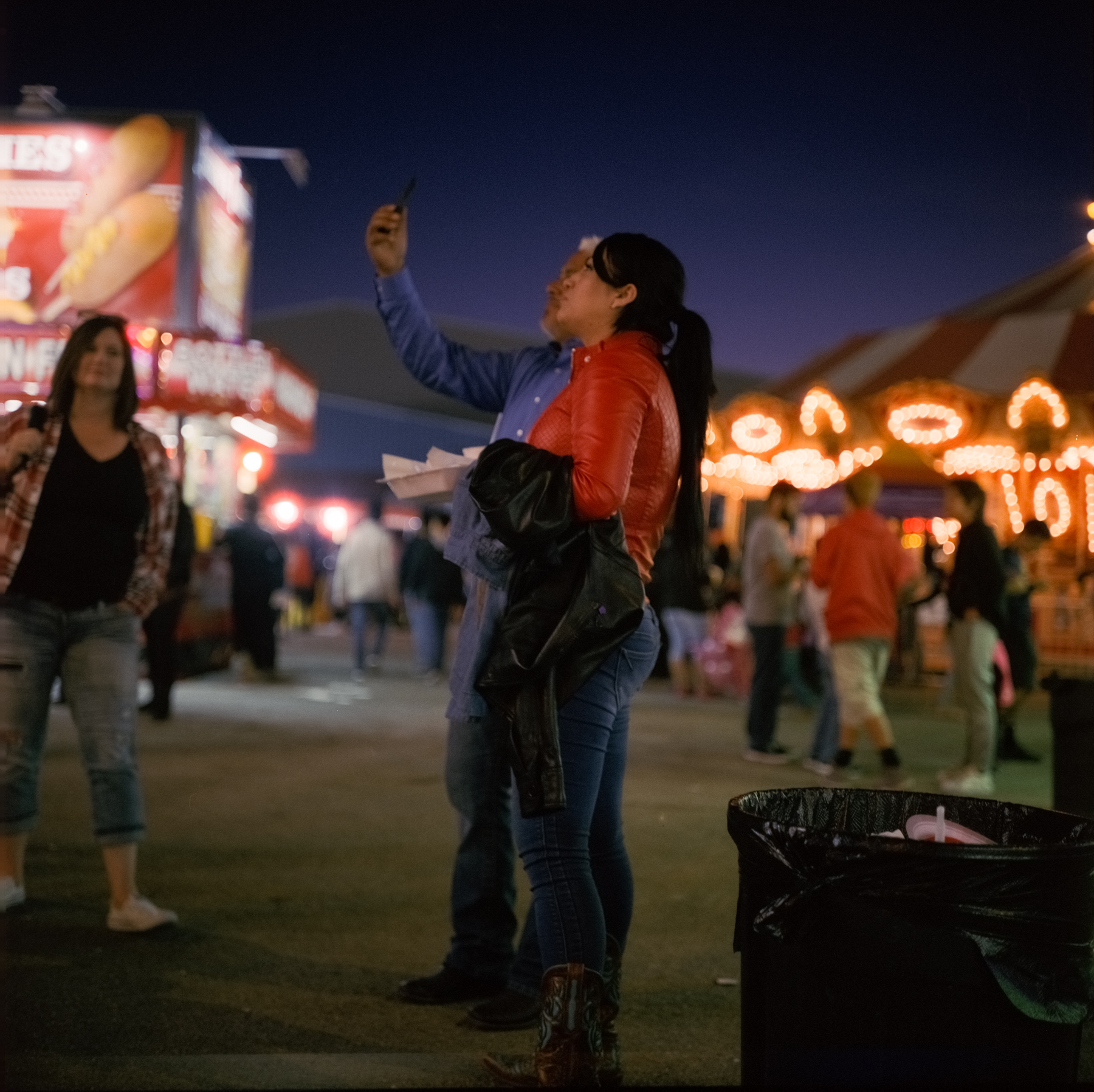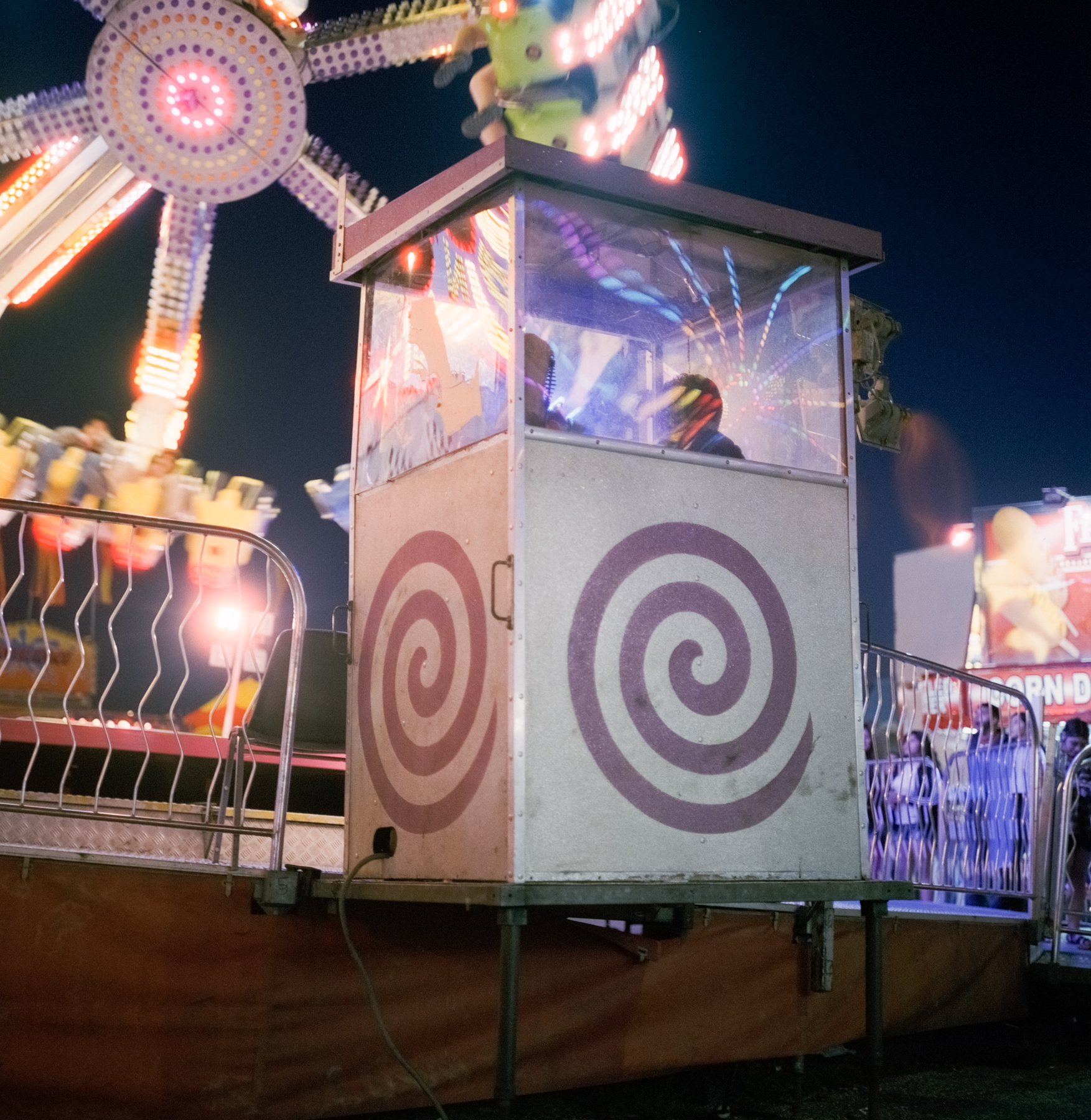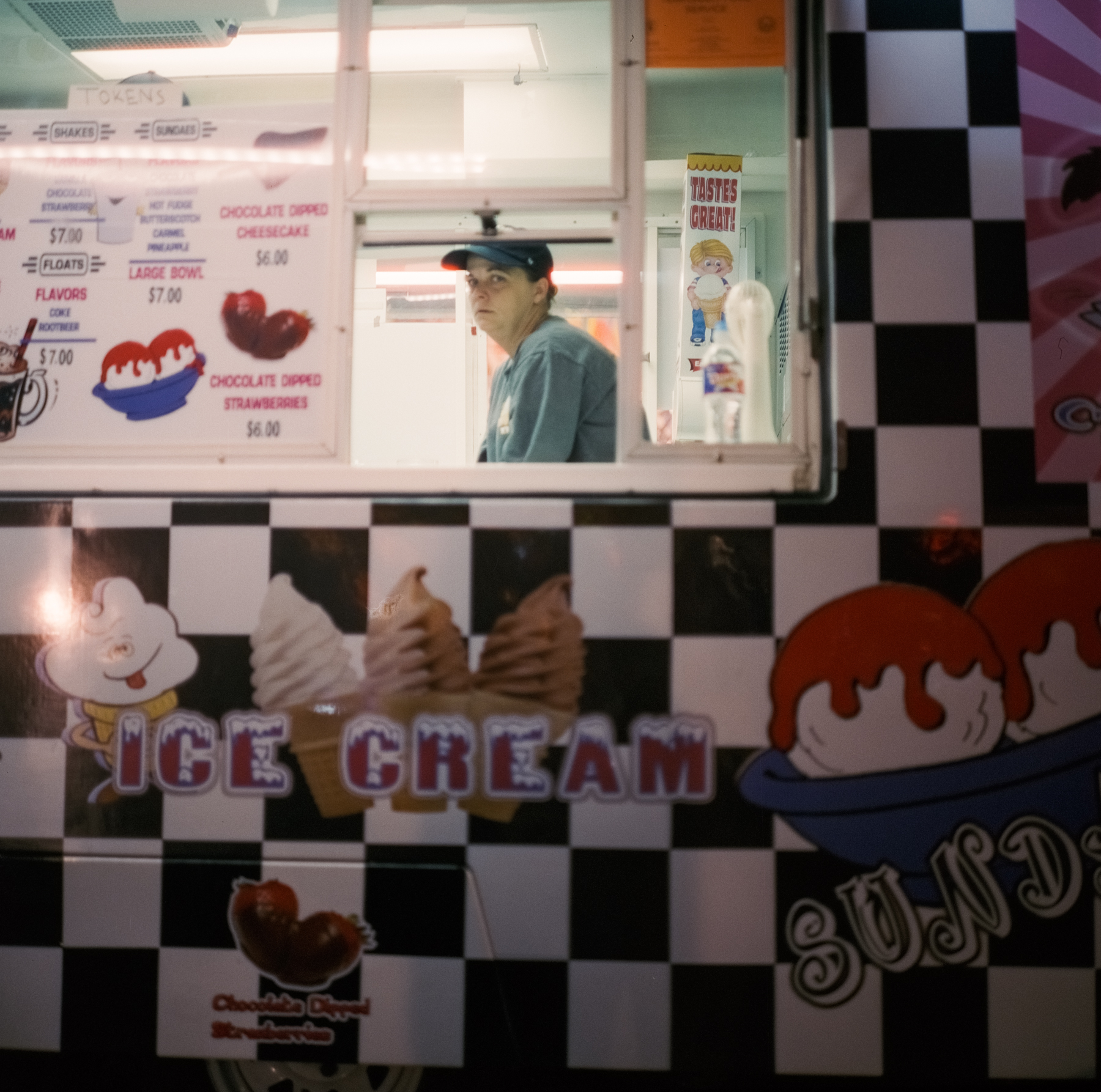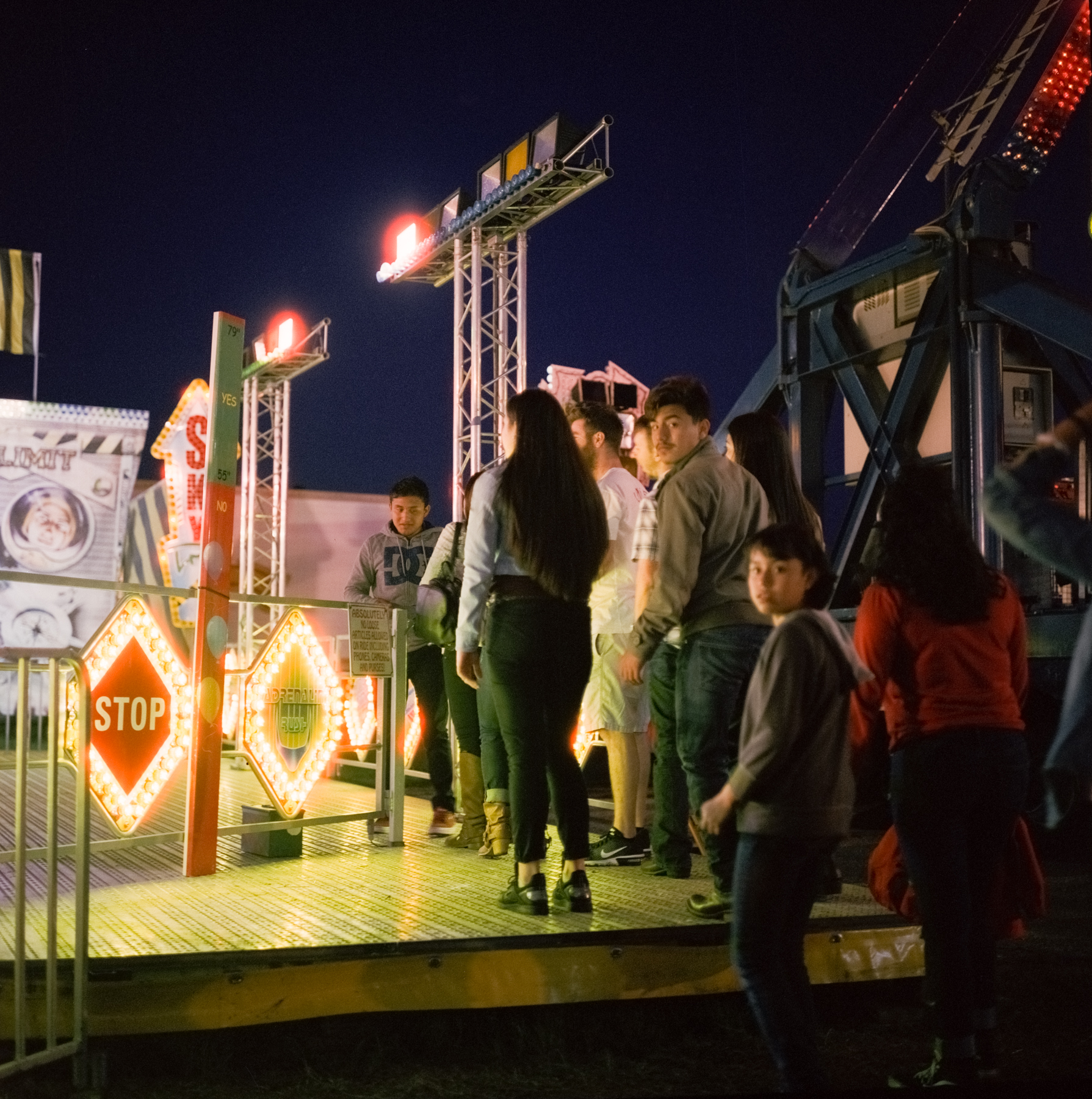CineStill 800T 4x5 - Ruby Berry
When CineStill first announced that one of the stretch goals for the 120 campaign would be 4x5 800T, I almost couldn't believe it. Large format, on top of 120? That is like getting a pony for your birthday and then SURPRISE - it’s actually a unicorn. Or so I imagine.
Anyhow, fast forward to last month when my unicorn arrived. Originally I had planned to shoot it with my Speed Graphic, but I was in the middle of trying to MacGyver mount a magic lantern lens to the sorriest excuse of a homemade lens board the world has ever seen. My Kodak 2D, however, had the 4x5 back on it and was thus ready to roll. The only problem was that I had a shutterless barrel lens on it and was not sure if I could move fast enough to get a viable image with the 800T. In the end, I decided to live on the edge and just try it.
Milady, Kodak 2D 5x7 with 4x5 back and barrel lens
I set up two different but equally vibrant shots in studio. Both were lit with a single 500 watt tungsten in a soft box. When loading the holders, I was pleased with the packaging of the sheet film and that it was notched on the top right of the emulsion side just like any other photographic sheet film. I shot 4 sheets and processed using the SP-445 tank and a reasonably fresh Unicolor C41 kit.
CineStill 4x5 800T | Kodak 2D
At first glance, the negatives seemed very dense, which didn't surprise me as they would have been fairly overexposed. To my delight, however, they scanned just fine and yielded viable images. While it was necessary to do some adjustments in Lightroom to compensate for the exposure, the color required very little in the way of correction. With a proper shutter and exposure, this film will be outstanding. As it is, it held up very well under my rather punishing conditions.
CIneStill 4x5 800T | Kodak 2D
During the shoot, I also shot a roll of the CineStill 120 800T in my Hasselblad 500 c/m with the 80mm f/2.8. I rated it at 400 and just for kicks, I bypassed the bleach when processing it. And was shocked by how well that turned out. Overall, the grain is so fine and the tonality is truly lovely. The 120 appears to be as flexible as the 35mm, which makes me so happy.
CineStill 120 800T, bleach bypass | Hasselblad 500 c/m
CineStill 120 800T, bleach bypass | Hasselblad 500 c/m
Cinestill 800T 120 - Amy Jasek
It's no secret that I adore CineStill's 800T in 35mm format. Thanks to the rewards they offered with their crowdfunding campaign for the medium and large format versions of the film, I now have a 100 foot roll in my freezer; I would keep an extra one in there at all times if I could get my hands on it!
It's also no secret that I waited on pins and needles to receive the alpha version of their new medium format film, especially since my experience with the beta roll they so graciously sent me in advance left me hungering for more. . . . and better. (You can read the article I wrote about that roll here.) Was my previous skepticism due to poor exposure? Was it the way I scanned it? Was it just those pesky sprocket holes? I couldn't wait to find out, so I loaded a roll into my camera almost immediately.
Full disclosure: I didn't use a light meter this time either, but please bear in mind that I almost never use a light meter anyhow, having spent a great deal of time building up a relationship with my cameras and forcing myself to observe light closely enough so that I can judge the settings without having to haul another piece of equipment around with me.
This first alpha roll I exposed in my everyday life, mostly around my house. This is not how I would normally use the film; I prefer to use CineStill 800T at night, especially around carnival, neon, or holiday lights. That being said, I was pretty excited about the results. Sometimes, my Rolleiflex jams and gives me a double exposure for the first shot on the roll; of course it chose my first ever roll of 120 alpha to pull those shenanigans, as you see in the first photograph below.
I took the Rolleiflex with me on errands and finished the roll. Note how it handled the less-than-gorgeous light of a local supermarket.
Having quelled my curiosity, I sat tight for a few weeks until it was Rodeo time. This event is where I exposed the beta roll last year, so I decided to follow the exact same routine for the alpha version. I loaded my Hasselblad, put a second roll in my pocket, and walked around with my daughter for half an hour (after a stop at the bungee trampoline).
Each of these frames required the usual color-correcting, either with Silverfast or Lightroom, to remove the blue cast. I made some other slight adjustments in terms of contrast, but otherwise that was it.
Conclusion
The day after I got the negatives back from the lab (developed normally, no push), I rushed to the ordering site for CineStill backers and pre-ordered a further 10 rolls. Maybe I should have ordered 20. . . . . The grain is lovely, the colors are pure CineStill joy, and I am already looking forward to my next outing with this film.






